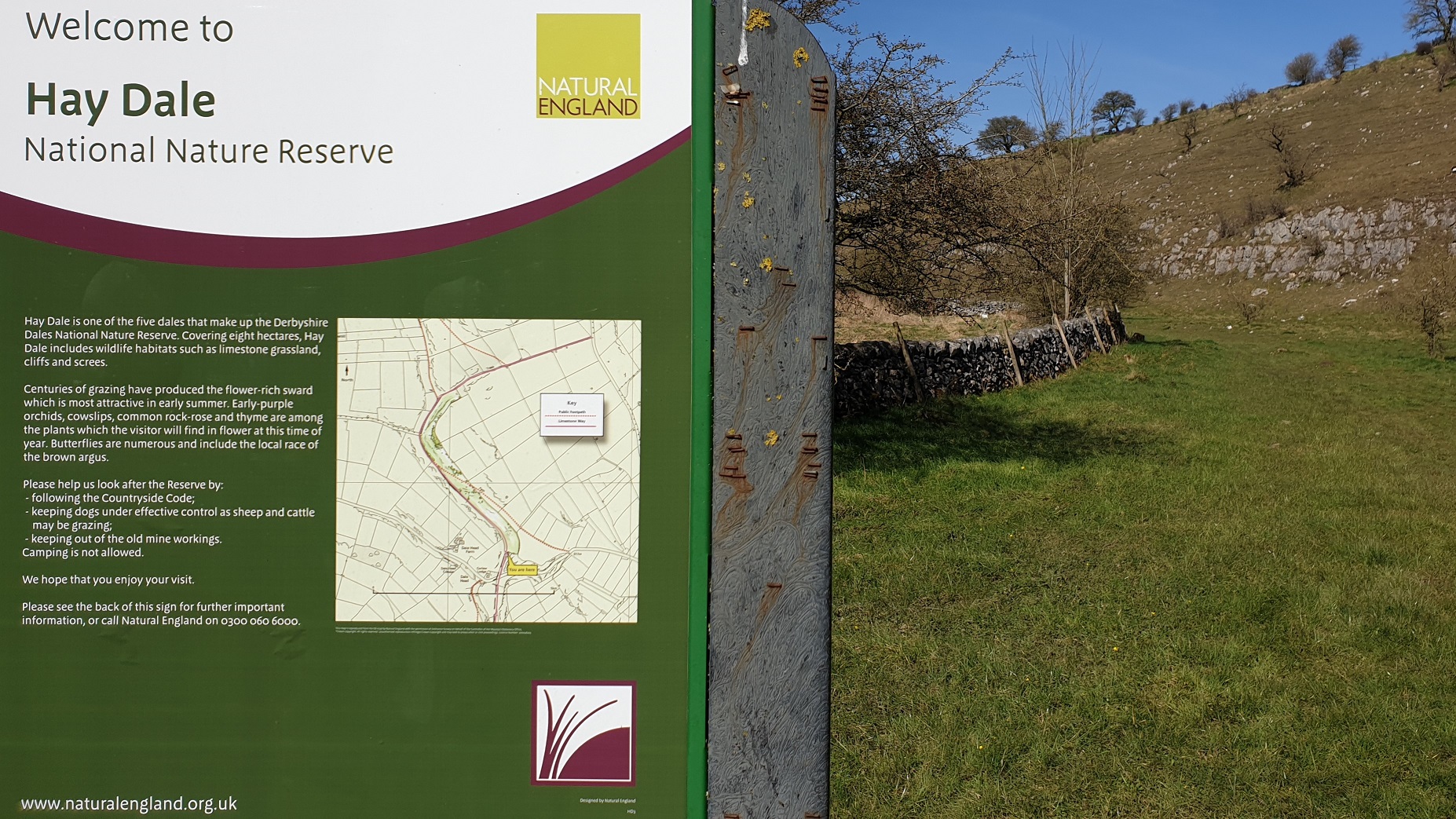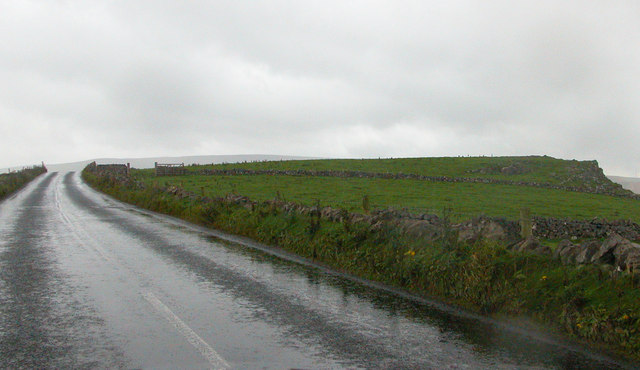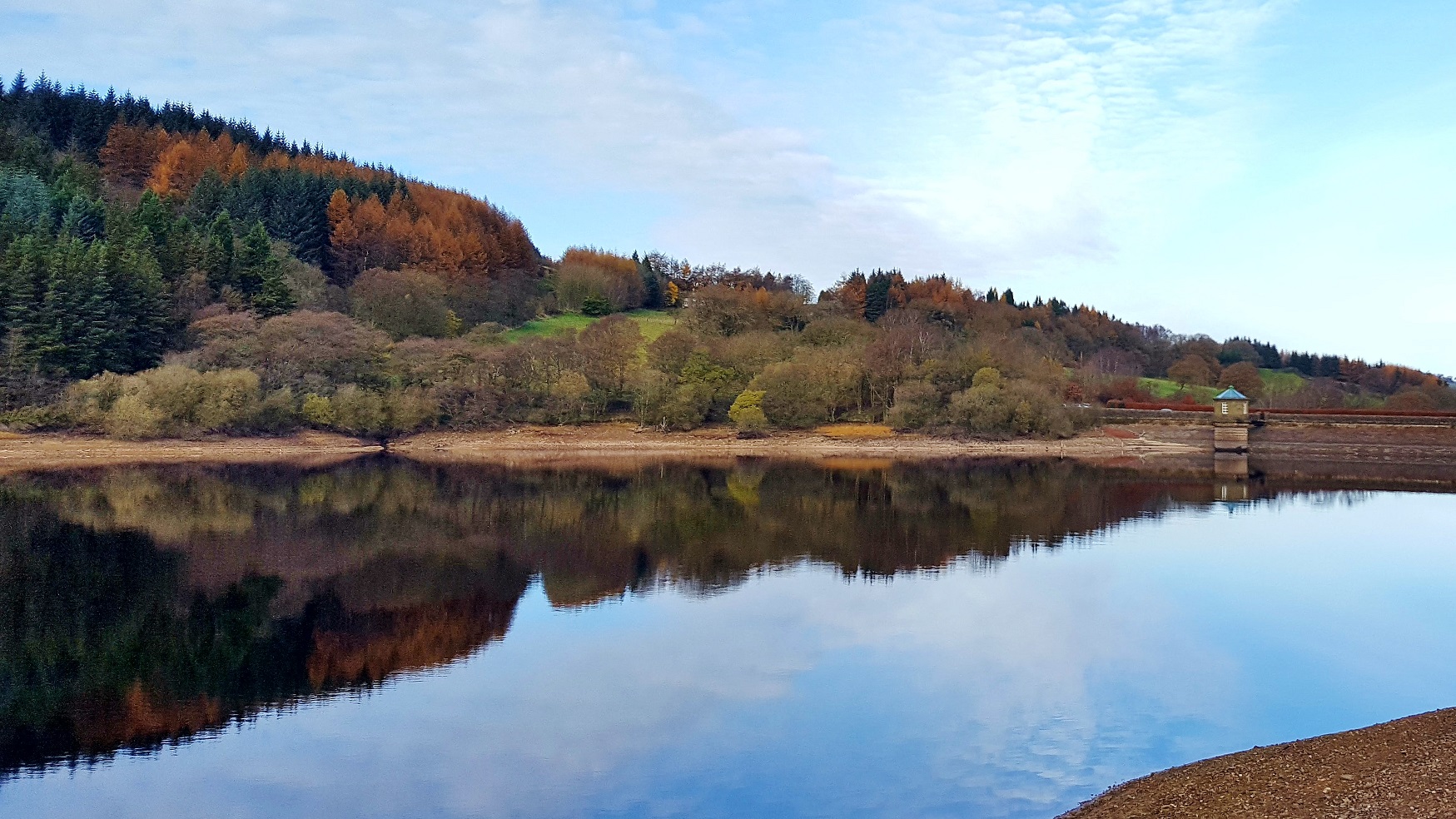|
Hay Dale
Hay Dale is a short dry valley near Buxton, Derbyshire, in the Peak District of England. It is part of a longer valley that runs for approximately north–south from Peak Forest (on the A623 road) to the River Wye at Millers Dale. This valley has several names along its length: from the northern end running downhill these are Dam Dale, Hay Dale, Peter Dale and Monk's Dale. There is a farmland plateau on either side. Hay Dale is part of the Derbyshire Dales National Nature Reserve. Natural England manages the reserve which covers five separate dales of the White Peak (Lathkill Dale, Cressbrook Dale, Hay Dale, Long Dale and Monk's Dale). The Carboniferous limestone rocks of the reserve were formed 350 million years ago from the shells and sediments of a tropical sea. The landscape was then sculpted by the ice sheets from the last Ice Age 20,000 years ago. The reserve contains ash woodland, limestone grassland and many wildflowers including early purple orchid, cowslip, c ... [...More Info...] [...Related Items...] OR: [Wikipedia] [Google] [Baidu] |
Derbyshire
Derbyshire ( ) is a ceremonial county in the East Midlands, England. It includes much of the Peak District National Park, the southern end of the Pennine range of hills and part of the National Forest. It borders Greater Manchester to the north-west, West Yorkshire to the north, South Yorkshire to the north-east, Nottinghamshire to the east, Leicestershire to the south-east, Staffordshire to the west and south-west and Cheshire to the west. Kinder Scout, at , is the highest point and Trent Meadows, where the River Trent leaves Derbyshire, the lowest at . The north–south River Derwent is the longest river at . In 2003, the Ordnance Survey named Church Flatts Farm at Coton in the Elms, near Swadlincote, as Britain's furthest point from the sea. Derby is a unitary authority area, but remains part of the ceremonial county. The county was a lot larger than its present coverage, it once extended to the boundaries of the City of Sheffield district in South Yorkshire where it cov ... [...More Info...] [...Related Items...] OR: [Wikipedia] [Google] [Baidu] |
Orchis Mascula
''Orchis mascula'', the early-purple orchid, early spring orchis, is a species of flowering plant in the orchid family, Orchidaceae. Description ''Orchis mascula'' is a perennial herbaceous plant with stems up to high, green at the base and purple on the apex. The root system consists of two tubers, rounded or ellipsoid. The leaves, grouped at the base of the stem, are oblong-lanceolate, pale green, sometimes with brownish-purple speckles. The inflorescence is long and it is composed of 6 to 20 flowers gathered in dense cylindrical spikes. The flower size is about and the color varies from pinkish-purple to purple. The lateral sepals are ovate-lanceolate and erect, the median one, together with the petals, is smaller and cover the gynostegium. The labellum is three-lobed and convex, with crenulated margins and the basal part clearer and dotted with purple-brown spots. The spur is cylindrical or clavate, horizontal or ascending. The gynostegium is short, with reddish-green ... [...More Info...] [...Related Items...] OR: [Wikipedia] [Google] [Baidu] |
Valleys Of The Peak District
A valley is an elongated low area often running between hills or mountains, which will typically contain a river or stream running from one end to the other. Most valleys are formed by erosion of the land surface by rivers or streams over a very long period. Some valleys are formed through erosion by glacial ice. These glaciers may remain present in valleys in high mountains or polar areas. At lower latitudes and altitudes, these glacially formed valleys may have been created or enlarged during ice ages but now are ice-free and occupied by streams or rivers. In desert areas, valleys may be entirely dry or carry a watercourse only rarely. In areas of limestone bedrock, dry valleys may also result from drainage now taking place underground rather than at the surface. Rift valleys arise principally from earth movements, rather than erosion. Many different types of valleys are described by geographers, using terms that may be global in use or else applied only locally. ... [...More Info...] [...Related Items...] OR: [Wikipedia] [Google] [Baidu] |
Wheston
Wheston is a village and civil parish in the Derbyshire Peak District. Notable features include Wheston Hall and the Wheston Cross. The cross, which survives intact, is more than high. It probably dates from the 14th century and marked the way from Tideswell to Buxton along the Forest Road. Images of the Madonna and Child and the Crucifixion Crucifixion is a method of capital punishment in which the victim is tied or nailed to a large wooden cross or beam and left to hang until eventual death from exhaustion and asphyxiation. It was used as a punishment by the Persians, Carthagi ... are carved into it. The cross is both a scheduled monument and a Grade II* listed building. The village was formerly known as ''Whestone''. References External links {{authority control Towns and villages of the Peak District Villages in Derbyshire Derbyshire Dales ... [...More Info...] [...Related Items...] OR: [Wikipedia] [Google] [Baidu] |
Wormhill
Wormhill is a village and civil parish in the High Peak district of Derbyshire, England, situated east by north of Buxton. The population of the civil parish including Peak Dale was 1,020 at the 2011 Census. Wormhill was mentioned in the Domesday book as belonging to Henry de FerrersHenry was given a large number manors in Derbyshire including Aston-on-Trent, Breaston, Duffield and Swarkestone. and containing of meadow.''Domesday Book: A Complete Translation''. London: Penguin, 2003. p.749 The name is said by the English Place-Name Society to be derived from the Old English 'Wyrma's hyll'. There was a tradition of wolf hunting in Wormhill in the fourteenth century. It was said that a living was made by some and that an annual tribute of wolfheads was shown. It has been reported that the last wolf killed in England was at Wormhill Hall in the 15th century. [...More Info...] [...Related Items...] OR: [Wikipedia] [Google] [Baidu] |
Roman Roads
Roman roads ( la, viae Romanae ; singular: ; meaning "Roman way") were physical infrastructure vital to the maintenance and development of the Roman state, and were built from about 300 BC through the expansion and consolidation of the Roman Republic and the Roman Empire. They provided efficient means for the overland movement of armies, officials, civilians, inland carriage of official communications, and trade goods. Roman roads were of several kinds, ranging from small local roads to broad, long-distance highways built to connect cities, major towns and military bases. These major roads were often stone-paved and metaled, cambered for drainage, and were flanked by footpaths, bridleways and drainage ditches. They were laid along accurately surveyed courses, and some were cut through hills, or conducted over rivers and ravines on bridgework. Sections could be supported over marshy ground on rafted or piled foundations.Corbishley, Mike: "The Roman World", page 50. Warwick Press, ... [...More Info...] [...Related Items...] OR: [Wikipedia] [Google] [Baidu] |
Batham Gate
Batham Gate is the medieval name for a Roman road in Derbyshire, England, which ran south-west from Templebrough on the River Don, South Yorkshire, River Don in South Yorkshire to Brough-on-Noe (Latin ''Navio Roman Fort, Navio'') and the spa town of Buxton (Latin ''Aquae Arnemetiae'') in Derbyshire. ''Gate'' means "road" in northern English dialects; the name therefore means "road to the bath town". The route of the road from Templebrough to the Roman signal station Navio is disputed. Joseph Hunter (antiquarian), Hunter suggested the Long Causeway at Redmires Reservoirs, Redmires as the route and it was shown as such on Ordnance Survey maps, but this is now known to be a medieval packhorse Salt road, saltway. Roman road historian Ivan Donald Margary said that the Long Causeway had a slightly different route in Roman times. In his book ''Roman Roads In Britain'' he said that evidence is now available that shows that after the Redmires Reservoir the Roman road did not follow the m ... [...More Info...] [...Related Items...] OR: [Wikipedia] [Google] [Baidu] |
Pennine Bridleway
The Pennine Bridleway is a National Trail in Northern England. It runs roughly parallel with the Pennine Way but provides access for horse riders and cyclists as well as walkers. The trail is around long, extending from Derbyshire to Cumbria. It includes the Mary Towneley Loop and the Settle Loop. In its southern part, it follows the High Peak Trail along the trackbed of the former Cromford and High Peak Railway. History In 1986 Mary Towneley rode on horseback from Corbridge, Northumberland, to Ashbourne, Derbyshire, to launch the idea of a Pennine Bridleway. This was followed by a feasibility study and route investigation from 1987 to 1990. Finally in 1995 approval was granted for the Pennine Bridleway National Trail from Carsington Water, Derbyshire, to Kirkby Stephen, Cumbria. In 1999 Sport England awarded and donated £1,841,876 towards the route from Derbyshire to North Yorkshire and 3 feeder routes from Keighley, Bolton and Penistone. The Pennine Bridleway proje ... [...More Info...] [...Related Items...] OR: [Wikipedia] [Google] [Baidu] |
Peak District Boundary Walk
The Peak District Boundary Walk is a circular walking trail, starting and finishing at Buxton and broadly following the boundary of the Peak District, Britain's first national park. The route was developed by the Friends of the Peak District (a branch of the Campaign to Protect Rural England) and was launched on 17 June 2017. The Friends of the Peak District's founders, Gerald and Ethel Haythornthwaite, proposed the boundary of the Peak District National Park, which was subsequently established as the United Kingdom's first National Park in 1951. The route is waymarked with green markers and uses existing footpaths, tracks, quiet lanes, disused railway lines and a canal towpath. The start and finish is at the King's Head pub on Buxton Market Place, where a plaque has been installed by the Peak & Northern Footpaths Society (PNFS). The terrain covers open moorlands of the South Pennines, the limestone scenery of the Derbyshire Dales, woodlands, reservoirs and rural farming ... [...More Info...] [...Related Items...] OR: [Wikipedia] [Google] [Baidu] |
Limestone Way
The Limestone Way is a waymarked long-distance footpath in Derbyshire, England. It runs for through the White Peak of the Peak District National Park, from Castleton south to Rocester over the county boundary into Staffordshire. The trail is named for the limestone scenery along its route. It was devised by Brian Spencer of Matlock Rotary Club and developed and opened in 1986 by the West Derbyshire District Council (which became Derbyshire Dales District Council in 1987). It originally ran to Matlock, but was extended to its current, longer route in 1992 to join up with the Staffordshire Way. The route From Castleton, the route runs up Cave Dale, past the village of Peak Forest, down Hay Dale (shared with the Peak District Boundary Walk) and along Peter Dale. It then runs parallel to Monk's Dale and through the village of Millers Dale (passing under the viaduct which carries the Monsal Trail and crossing the River Wye). It then crosses the A6 near the Waterloo Inn ... [...More Info...] [...Related Items...] OR: [Wikipedia] [Google] [Baidu] |
Early Purple Orchid In Hay Dale
{{disambiguation, geo ...
Early may refer to: History * The beginning or oldest part of a defined historical period, as opposed to middle or late periods, e.g.: ** Early Christianity ** Early modern Europe Places in the United States * Early, Iowa * Early, Texas * Early Branch, a stream in Missouri * Early County, Georgia Other uses * ''Early'' (Scritti Politti album), 2005 * ''Early'' (A Certain Ratio album), 2002 * Early (name) * Early effect, an effect in transistor physics * Early Records, a record label * the early part of the morning See also * Earley (other) Earley is a town in England. Earley may also refer to: * Earley (surname), a list of people with the surname Earley * Earley (given name), a variant of the given name Earlene * Earley Lake, a lake in Minnesota *Earley parser, an algorithm *Earley ... [...More Info...] [...Related Items...] OR: [Wikipedia] [Google] [Baidu] |
Aricia Agestis
''Aricia agestis'', the brown argus, is a butterfly in the family Lycaenidae. It is found throughout the Palearctic realm, north to northern Jutland (Denmark) and east to Siberia and the Tian Shan. Subspecies *''A. a. agestis'' southern and central Europe *''A. a. calida'' Chavignerie Sicily, Italy, Asia Minor *''A. a. azerbaidzhana'' Obraztsov, 1935 Transcaucasia, Caucaus Major *''A. a. nazira'' (Moore, 1865) Darvaz, western Pamirs, north-western Himalayas Brown argus (Aricia agestis) female.jpg, female ''A. a. agestis, UK Brown argus (Aricia agestis calida) Italy.jpg, female ''A. a. calida'', Italy Aricia agestis, Brown Argus, Minera, North Wales, May 2017 (34680423115).jpg , larva Description in Seitz ''L. astrarche'' Bgstr. (= ''medon'' Hufn., ''agestis'' Schiff., ''idas'' Gerh. (?), ''nazira'' Moore) (79 k). Above similar to the preceding, L. anteros ">Aricia_anteros.html" ;"title="Aricia anteros">L. anteros deep dark brown, with strongly marked discocellular spot, es ... [...More Info...] [...Related Items...] OR: [Wikipedia] [Google] [Baidu] |






